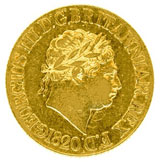By Ian Gordon
SilverSeek.com

Most commentators that I read are more bullish on silver than gold. Not me, I am in the minority camp being far more bullish on gold than I am on silver. Now, let me tell you why I feel this way.
In 1717, Sir Isaac Newton, who was then master of the Royal Mint in London, established a new mint ratio between silver and gold, which effectively put Britain on a gold standard. During the Napoleonic Wars Britain curtailed convertibility. This was reestablished in 1821 with the new £1 sovereign becoming the standard gold monetary coin of the realm, replacing the guinea.
When Britain returned to the gold standard in 1821, most European countries’ currencies were either tied to silver or to a bi-metallic standard linked to both silver and gold. The currencies of Germany, Austria-Hungary, The Netherlands, Sweden, Denmark and Norway were silver based, whereas the currencies of France, Italy, Belgium and Switzerland were bi-metallic.
By 1873, all these countries, except Switzerland had abandoned their respective currency metal affiliation in favour of gold. The United States also tied the dollar to gold in that year. The Swiss franc was made convertible into gold in the following year. Thus, 1873 marks the emergence of the Classical Gold Standard. Each of these national currencies was fixed to the value of an ounce of gold. For example, the dollar was set at $20.67 (U.S.) and the £ was set at £4 and 5 shillings per gold ounce. Since silver was no longer a part of the currency mix it’s price fluctuated, strictly based upon supply and demand.
